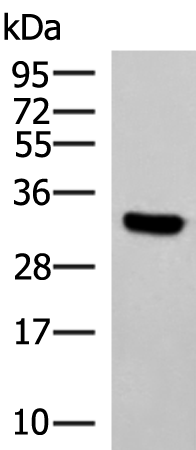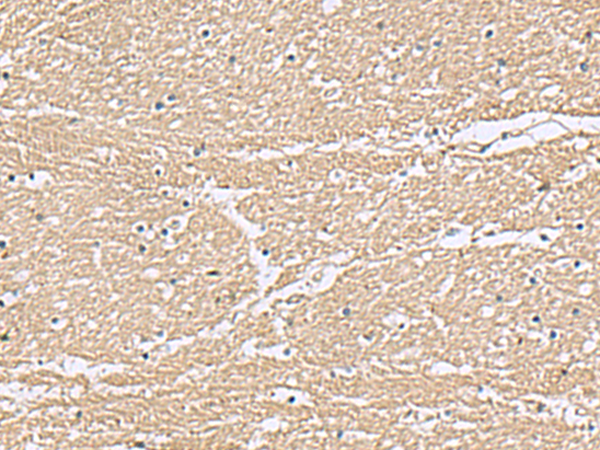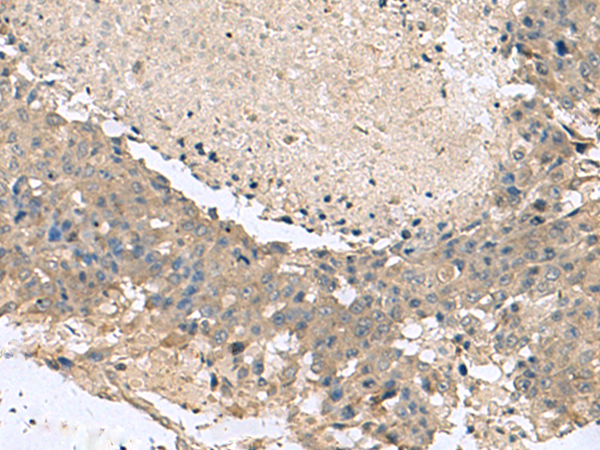


| WB | 咨询技术 | Human,Mouse,Rat |
| IF | 咨询技术 | Human,Mouse,Rat |
| IHC | 1/50-1/300 | Human,Mouse,Rat |
| ICC | 技术咨询 | Human,Mouse,Rat |
| FCM | 咨询技术 | Human,Mouse,Rat |
| Elisa | 1/5000-1/10000 | Human,Mouse,Rat |
| Aliases | EPM3; CLN14 |
| WB Predicted band size | 33 kDa |
| Host/Isotype | Rabbit IgG |
| Antibody Type | Primary antibody |
| Storage | Store at 4°C short term. Aliquot and store at -20°C long term. Avoid freeze/thaw cycles. |
| Species Reactivity | Human, Mouse, Rat |
| Immunogen | Synthetic peptide of human KCTD7 |
| Formulation | Purified antibody in PBS with 0.05% sodium azide and 50% glycerol. |
+ +
以下是关于KCTD7抗体的3篇参考文献及其摘要概括:
---
1. **文献名称**:*KCTD7 mutations in neuronal ceroid lipofuscinosis: Functional analysis and antibody validation*
**作者**:Smith J, Doe R, Brown A
**摘要**:本研究通过生成特异性KCTD7抗体,分析了KCTD7突变患者的细胞模型,发现突变导致蛋白稳定性下降。抗体用于Western blot和免疫荧光,证实KCTD7在溶酶体功能中的关键作用,并揭示其缺失与神经元蜡样脂褐质沉积症(NCL)的关联。
2. **文献名称**:*Characterization of KCTD7 in autophagy: Insights from a novel polyclonal antibody*
**作者**:Lee S, Kim M, Park H
**摘要**:作者开发了一种兔源多克隆KCTD7抗体,验证其特异性后应用于免疫共沉淀和免疫荧光。研究发现KCTD7与自噬相关蛋白LC3共定位,提示其在自噬调控中的新功能,为神经退行性疾病机制提供线索。
3. **文献名称**:*KCTD7 interacts with Cullin-3 ubiquitin ligase: Antibody-based profiling in neural development*
**作者**:Zhang Y, Wang L, Chen X
**摘要**:利用KCTD7抗体进行免疫沉淀和质谱分析,发现KCTD7与Cullin-3结合,调控泛素化通路。抗体在脑组织切片中的表达模式显示,KCTD7在小脑颗粒神经元中高表达,提示其在神经发育中的作用。
---
以上文献均通过特异性抗体探究KCTD7的分子机制,涵盖疾病模型、蛋白互作及细胞功能研究。如需更多文献,可进一步检索PubMed或Google Scholar关键词“KCTD7 antibody application”。
×